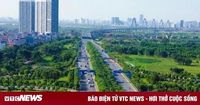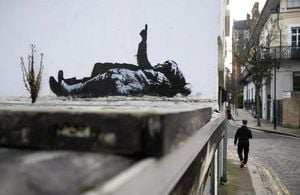On September 17 and 18, 2025, Vietnam’s top traffic safety officials gathered with social media influencers, road authorities, and vehicle inspectors to address a growing set of challenges facing the country’s highways and city streets. The meetings—hosted by the Traffic Police Department (Cục CSGT) under the Ministry of Public Security—highlighted not just new efforts to modernize traffic management but also an urgent debate over the safety of median strip landscaping, a topic thrust into the spotlight by a recent multi-vehicle accident.
Colonel Đỗ Thanh Bình, Chief of the Traffic Police Department, opened the dialogue by acknowledging the power of public feedback. According to coverage by VTC News and LSVN, he explained that authorities have been actively listening to citizens’ concerns, especially those voiced online. "Feedback from the public via social media was reviewed and units were assigned to strictly handle issues," Đỗ Thanh Bình noted. He emphasized that, where concerns fell outside the jurisdiction of the traffic police, recommendations were quickly forwarded to relevant ministries for action.
One persistent complaint from citizens is the inconvenience of traveling long distances to pay traffic fines—especially so-called "cold fines" issued by automated camera systems. In response, the Traffic Police Department is proposing regulatory changes to allow fines to be paid at local commune police stations or even digitally via the VNeTraffic application. "When data synchronization occurs within 2 hours, violators can receive violation information and confirmation messages; they can confirm to pay fines or dispute with authorities," Đỗ Thanh Bình explained. This marks a significant step toward making the process faster and more transparent. Currently, the VNeTraffic app already enables citizens to report traffic issues and receive updates on safety conditions, a move that signals the agency’s growing embrace of digital solutions.
But modernization efforts extend well beyond fines. Lane allocation on highways, national roads, and urban streets is also under review. The Traffic Police plan to coordinate with other agencies to study and implement more lanes where possible, especially in crowded urban areas. One proposal involves narrowing car lanes from the current 3.75 meters to a slightly smaller width, which would allow more lanes to fit within the same road space. The goal, Đỗ Thanh Bình said, is to avoid situations where two lanes are occupied by three cars driving side-by-side, a common source of congestion and accidents. This scientific approach to lane management aims to reduce conflicts and ensure a smoother flow of vehicles.
Highways are also getting a fresh look. The Traffic Police Department is researching potential legal amendments to require that any road with at least two lanes includes a dedicated overtaking lane. On three-lane highways, for instance, trucks would be restricted to the rightmost lane, large passenger buses (with 30 seats or more) would use the middle and right lanes near emergency stopping areas, and smaller vehicles would be allowed to overtake on the leftmost lane, closest to the median strip. For two-lane highways, all trucks and large buses would stay in the right lane, while cars and smaller vehicles would use the lane adjacent to the median. These changes, officials argue, could help reduce the risk of collisions and keep traffic moving safely and efficiently.
Yet, as these technical reforms advance, another issue has captured the attention of both experts and the public: the safety of planting trees in the median strips of highways. At a joint meeting on September 18 with the Vietnam Road Administration and the Vietnam Register, Colonel Đỗ Thanh Bình issued a blunt warning. Drawing on international examples, he explained, "International experience shows the need to limit planting trees in median strips because of maintenance activities (fertilizing, pruning, watering) that pose traffic safety risks." He pointed to cities like Tokyo and Seoul, where concrete barriers and fences are the norm and trees are only planted where medians are wide enough to ensure safety.
The risks are not hypothetical. On September 15, a limousine traveling on the Pháp Vân - Ninh Bình highway collided with the rear of a tree maintenance vehicle parked near the median strip. The crash, which took place at kilometer marker 222+800 in Ninh Bình province, caused the limousine to overturn and subsequently crash into two other vehicles. Ten people in the limousine were injured, and eleven more in a 30-seat passenger bus suffered minor injuries. All were promptly taken to hospital by emergency responders. According to the Vietnam Road Administration, this accident underscores the dangers posed by maintenance activities in highway medians, especially as traffic volumes continue to rise.
Vietnam’s road authorities acknowledge that planting trees in median strips has both benefits and drawbacks. "Planting trees in median strips has benefits like dust reduction, glare limitation, and environmental improvement, but maintenance is more complex than maintaining concrete or steel barriers," a representative explained. For example, on Hanoi’s Đại lộ Thăng Long highway, lush greenery in the median sometimes obscures road signs, making navigation more difficult for drivers. While trees can help reduce glare from oncoming headlights and improve air quality, the process of watering, pruning, and fertilizing them introduces new risks—especially on high-speed roads where maintenance vehicles may be struck by passing traffic.
Since 2020, Vietnam has largely stopped planting new trees in highway medians, except on certain older routes such as Pháp Vân – Cầu Giẽ, Cầu Giẽ – Ninh Bình, and Nội Bài – Lào Cai. The decision to plant or not plant trees is left to the managing authority for each road, but the trend is clear: "With increasing traffic volumes rising from 3-4 million vehicles in 2020 to over 10 million now, the authorities do not encourage planting trees in median strips, preferring concrete barriers for easier maintenance and safety," the Vietnam Road Administration stated. Trees are now only recommended for very wide medians reserved for future expansion or metro lines, and even then, only low shrubs are suggested.
During maintenance, strict protocols are in place. "During maintenance, traffic warning signs must be placed to alert drivers," officials said. But as the recent accident shows, even with precautions, risks remain—especially as Vietnam’s vehicle count has more than doubled in just five years. The science on the matter is not settled, either. "It’s hard to definitively say whether planting trees in the median is necessary or not, or whether it’s effective or not," admitted a road authority representative. For now, the balance appears to be shifting toward concrete barriers and away from greenery, especially on the nation’s busiest highways.
These debates come at a critical time for Vietnam’s transportation infrastructure. As the country’s cities expand and its highways grow more crowded, officials are under increasing pressure to find solutions that balance efficiency, safety, and environmental concerns. The Traffic Police Department’s recent outreach to social media influencers and its embrace of digital tools like VNeTraffic suggest a willingness to listen and adapt. At the same time, the ongoing discussions about median strip landscaping reveal just how complex—and consequential—even seemingly minor design decisions can be.
Vietnam’s roads are changing fast, and the choices made by today’s policymakers will shape the daily commute for millions in the years to come. For now, the message from authorities is clear: safety comes first, whether that means a new app for paying fines or a reevaluation of what grows in the median strip.




